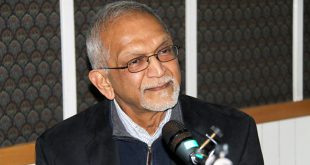This study discusses three fundamental Qurʾanic terms and argues that each has a salient cultic dimension. These terms are dīn, islām, and ḥanīf. The common understanding of these concepts, both in Islamic learning and in modern scholarship, generally does not emphasize or recognize their cultic dimensions.
The religious developments of Islam’s earliest decades have been subject to extensive research and vigorous debate in recent scholarship. What was the main thrust of the Prophet Muhammad’s preaching? What led the Prophet and his followers to form a distinct group apart from other communities of their milieu that are mentioned in the Qurʾan, namely, the mushrikūn (“pagans” or “polytheists”), Jews, and Christians? As scholars have looked to the Qurʾan to understand the religious developments of the Qurʾanic milieu, many have tended to locate the impulse behind these developments in the intellectual and theological realms of faith and conviction. For example, the Qurʾan’s emphasis on monotheism and the resulting polemic against the mushrikūn are often understood as pertaining primarily to belief and doctrine, not to matters of ritual and practice.
There is no denying the importance of doctrinal matters in the Qurʾanic milieu, but I would like to propose that many of the religious differences and conflicts referenced in the Qurʾan also had profoundly pragmatic dimensions that pertained to cultic rites of worship. By “cultic rites of worship” I mean those rituals associated with a sacred space—whether that be an altar, a sanctuary, or otherwise consecrated enclave—dedicated to a specific deity or deities and often featuring distinct taboos, purity requirements, guardians, and calendar of festivals. It appears that the rites performed in such cultic settings were central aspects of religion in Late Antique West Arabia. Accordingly, a vision of what constituted proper cultic worship—which rites to avoid, which ones to perform, and how to perform them—was crucial to the self-image of the earliest Muslims as well as the other communities that inhabited the same environment. Therefore, recognizing the precise parameters of these cultic visions is important to understanding the message of the Qurʾan, the criticisms that it levels at other religious communities, and the objections of these communities that are in turn addressed in the Qurʾan.
This study discusses three fundamental Qurʾanic terms and argues that each has a salient cultic dimension. These terms are dīn, islām, and ḥanīf. The common understanding of these concepts, both in Islamic learning and in modern scholarship, generally does not emphasize or recognize their cultic dimensions. For example, dīn is often rendered as “religion” in a broad sense, islām as “submission” (the intellectual and emotive disposition of resignation to God’s will), and ḥanīf as a “pure monotheist” (a person who recognizes only one God) or a “gentile.” By contrast, I propose different understandings of these terms in this paper. The first section argues that dīn in the Qurʾan often means “service” or “worship” and evokes the cultic actions that were associated with the veneration of Allāh and other deities. While it may not be incorrect to translate dīn as “religion,” it should be borne in mind that cultic rites of worship played a more central role in the Qurʾanic conception of religion than we customarily associate with the term.
Bibliographic Information
Title: Unearthing Abraham’s Altar: The Cultic Dimensions of dīn, Islām, and ḥanīf in the Qurʾan
Author(s): Husein Goudarzi
Published in: Journal of Near Eastern StudiesVolume 82, Number 1.
Language: English
Length: 26 Pages
 Ijtihad Network Being Wise and Faithful Muslim in the Contemporary World
Ijtihad Network Being Wise and Faithful Muslim in the Contemporary World

